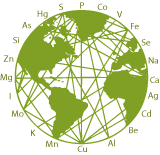Environmental Toxins
Through testing blood or urine, the individual systemic toxic exposure can be monitored quantitatively. Human Biomonitoring of organic toxic substances and their metabolites is used to determine the degree of acute and past exposures.
To assess past exposures, we take into account the half-life of toxic substances. Those with a long half-life such as certain pesticides or the polychlorinated biphenoles can be detected years after exposure.
We test insecticides, bactericides, wood preservatives and chemical solvents.
Your inquiry is appreciated.
Pesticides, Arsenic and other toxins
This documentary, The Silent Fields is focused on environmental pollution as it affects the people in Punjab, India.
http://gallagher-photo.com/environmental-stories/pesticide-poisoning-punjab-india
Punjab, India: Heavy metals, deep impact
Toxic metals have poisoned subsoil in some parts of Punjab to an extent that children have developed deformed limbs – many suffer from mental disorders. Cancer and heart diseases among adults are rampant.
MTM – Micro Trace Minerals has supported the study.
Read the full story here:
Analytic of Environmental Toxins
We test DDT, Formaldehyde, PCP, Lindane, various solvents and more. For detailled information, check our laboratory catalog or contact us at service@microtrace.de
Mercury in air near coal-fired power stations
The emission of mercury fumes near coal-fired power stations has been measured in Germany as shown in this documentary. It may be one reason why we are still seeing high levels of mercury in blood samples.
Pesticide levels linked to type 2 Diabetes
A number of studies have found a connection between diabetes risk and exposure to older pesticides known as organochlorines, PCBs and other chemicals that fall into the category of "persistent organic pollutants". People with relatively high levels of certain pesticides in their blood may have an increased risk of type 2 diabetes -- particularly if they are overweight, a new study suggests.
The study, reported in the journal Diabetes Care, is not the first to link chemical pollutants to diabetes View here
